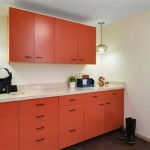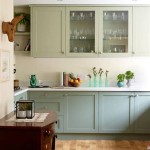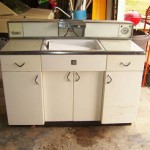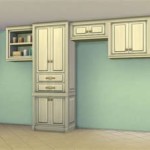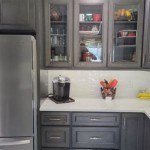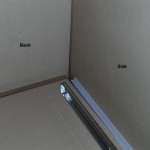Cabinet Pull Location: Achieving Optimal Functionality and Aesthetics
The placement of cabinet pulls is a crucial element in kitchen and bathroom design, directly impacting both the functionality and the aesthetic appeal of cabinetry. Careful consideration of ergonomics, design style, and practical use is essential to achieving a cohesive and user-friendly space. The selection of appropriate hardware and its strategic positioning can significantly enhance the overall experience of interacting with cabinets and drawers. This article explores the key considerations involved in determining the optimal cabinet pull location, encompassing standard guidelines, design principles, and specific scenarios.
Choosing the right location for cabinet pulls involves balancing practicality with aesthetics. While standardized measurements provide a general framework, individual preferences and the overall design scheme should ultimately dictate the final placement. Hardware location should not only be visually pleasing but also ensure ease of access and comfortable operation. A poorly placed pull can lead to awkward movements, unnecessary strain, and a less enjoyable experience in the kitchen or bathroom.
The first step in determining cabinet pull placement is to consider the style of the cabinet doors and drawers. Slab doors, Shaker doors, and raised-panel doors each present unique challenges and opportunities for hardware placement. The size and orientation of the door or drawer also play a significant role in determining the ideal location for the pull.
For example, on a standard Shaker-style cabinet door, the pull is typically placed along the stile, the vertical framing member of the door. This placement provides structural support and distributes the force evenly when opening and closing the door. In contrast, on a slab door, the pull can be positioned either horizontally or vertically, depending on the desired aesthetic.
The ergonomic aspect of cabinet pull placement is often overlooked, but it is a critical factor in ensuring user comfort. The height and position of the pull should be easily accessible for individuals of varying heights and abilities. Reaching for pulls that are positioned too high or too low can strain the back and shoulders, leading to discomfort and potential injury.
Furthermore, the proximity of the pull to the edge of the door or drawer can affect the amount of force required to open and close it. Positioning the pull closer to the edge increases leverage, making it easier to operate the cabinet. However, placing the pull too close to the edge can weaken the door or drawer over time, potentially leading to damage.
Standard Guidelines for Cabinet Pull Placement
While cabinet pull placement is ultimately a matter of personal preference, some general guidelines offer a starting point for determining the optimal location. These guidelines are based on years of experience and are designed to balance aesthetics with functionality. Adhering to these standards provides a foundation for creating a visually appealing and user-friendly kitchen or bathroom.
For upper cabinet doors, a common practice is to position the pull approximately 2 to 4 inches from the bottom corner of the door. This placement allows for easy reach and provides a consistent look across all upper cabinets. The precise measurement may vary depending on the size and style of the door, but the general principle remains the same.
For lower cabinet doors, the pull is typically placed between 2 and 4 inches from the top corner of the door. This placement mirrors the position on upper cabinets and creates a cohesive visual appearance. It also allows for easy access from a standing position, minimizing bending and reaching.
For drawers, the standard practice is to center the pull horizontally on the drawer front. For smaller drawers, a single pull is usually sufficient, while larger drawers may require two pulls for added stability and leverage. The vertical placement of the pull on the drawer front can vary depending on the desired aesthetic.
For small drawers, the pull is often centered both horizontally and vertically. For larger drawers, the pull is typically placed in the upper third of the drawer front, providing a comfortable grip and a visually balanced appearance. The specific placement can be adjusted to align with other design elements in the room, such as countertops or backsplashes.
When installing pulls on multiple drawers, it is important to ensure that they are all positioned at the same height. This creates a clean and consistent look across the entire run of cabinets. Using a level and a measuring tape is essential to achieving accurate and uniform placement.
Design Considerations for Cabinet Pull Placement
Beyond standard guidelines, design considerations play a crucial role in determining the optimal placement of cabinet pulls. The overall style of the kitchen or bathroom, the type of hardware selected, and the individual preferences of the homeowner should all be taken into account. A well-designed space seamlessly integrates functionality with aesthetics, creating a harmonious and inviting environment.
The style of the kitchen or bathroom should influence the type of hardware selected and its placement. For example, in a modern kitchen, sleek, minimalist pulls placed horizontally on slab doors can create a clean and contemporary look. In a traditional kitchen, ornate pulls placed on the stiles of Shaker doors can add a touch of elegance and sophistication.
The type of hardware selected can also affect the optimal placement. Knobs, pulls, and cup pulls each have unique characteristics that influence their positioning. Knobs are typically centered on doors and drawers, while pulls can be placed either horizontally or vertically, depending on the desired effect. Cup pulls are often used on drawers in traditional kitchens, providing a vintage-inspired look.
The size and shape of the hardware should also be considered. Large, oversized pulls can make a statement, while smaller, more discreet pulls can blend seamlessly into the background. The size of the hardware should be proportional to the size of the door or drawer, ensuring a balanced and visually appealing appearance.
The finish of the hardware should also complement the other elements in the room, such as the countertops, backsplash, and appliances. Coordinating the hardware finish with these elements can create a cohesive and harmonious design scheme. Popular hardware finishes include brushed nickel, stainless steel, oil-rubbed bronze, and matte black.
Personal preferences should also be taken into account when determining cabinet pull placement. Some homeowners prefer a more traditional look, while others prefer a more modern aesthetic. Ultimately, the goal is to create a space that reflects the homeowner's individual style and meets their specific needs.
Addressing Specific Scenarios in Cabinet Pull Placement
Certain cabinet configurations and design elements require specific considerations when determining cabinet pull placement. These scenarios often deviate from standard guidelines and require a more customized approach. Understanding these challenges and implementing appropriate solutions is crucial for achieving optimal functionality and aesthetics.
For corner cabinets, the pull placement can be tricky due to the limited space and the proximity of adjacent cabinets. A common solution is to place the pull on the angled portion of the door, allowing for easy access and preventing interference with other cabinets. Alternatively, a specialized corner cabinet pull can be used, designed specifically for this type of application.
For appliance panels, which are decorative panels that cover dishwashers or refrigerators, the pull placement should mimic the placement on adjacent cabinets to create a cohesive look. This ensures that the appliance panel blends seamlessly into the surrounding cabinetry, creating a unified design.
For tall pantry cabinets, the pull placement should be easily accessible for individuals of varying heights. A common practice is to place two pulls on the door, one near the top and one near the bottom. This allows for easy opening and closing from different positions.
For drawers with integrated handles, the handle is typically incorporated into the design of the drawer front, eliminating the need for separate hardware. This creates a clean and minimalist look, perfect for modern kitchens and bathrooms.
In situations where universal accessibility is a priority, lever-style pulls are often preferred over knobs. Lever pulls are easier to grip and operate, making them ideal for individuals with limited mobility or strength. The placement of lever pulls should be carefully considered to ensure easy access and comfortable operation.
Ultimately, the key to successful cabinet pull placement is to carefully consider the specific needs and preferences of the homeowner, the style of the kitchen or bathroom, and the unique characteristics of the cabinetry. By combining standard guidelines with thoughtful design considerations, it is possible to create a space that is both functional and aesthetically pleasing.

Cabinet Hardware Placement Guide

Where To Place Cabinet Hardware Emtek Living Blog

The Ultimate Guide For Cabinet Hardware Placement And Sizing

Cabinet Hardware Placement Guide

How To Install New Cabinet Hardware Blog Doorcorner Com

How To Install Cabinet Door And Drawer Handles Knobs Pulls

Design 101 Cabinet Hardware Placement Lark Linen

Design 101 Cabinet Hardware Placement Lark Linen

Cabinet Hardware Installation Guide At Cabinetknob Com

Cabinet Door Hardware Placement Guidelines Taylorcraft Company
Related Posts

